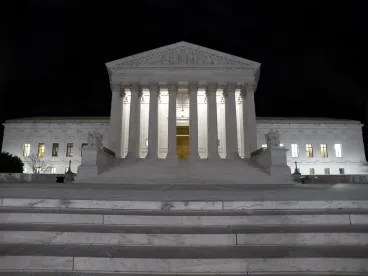On November 13, 2018, the U.S. Supreme Court granted certiorari in the junk fax action, Carlton & Harris Chiropractic, Inc. v. PDR Network, LLC, 883 F.3d 459 (4th Cir. 2018), which arose under the Junk Fax Prevention Act of the Telephone Consumer Protection Act (“TCPA”). Though the facts of the case centered on the definition of the term “unsolicited advertisement” under the 2006 FCC Rule, the high court’s eventual decision may not be just about fax liability. The Court is set to address wide-ranging issues concerning the interplay between the FCC’s interpretive authority under the Hobbs Act and the Supreme Court’s Chevron deference doctrine, which means the outcome of the Court’s holding may have far-reaching implications for pending and future litigation under the TCPA. Specifically, the Court’s decision may determine whether the FCC’s independent interpretation of the TCPA controls on an issue before a district court or whether district courts can independently devise their own interpretations under the Chevron doctrine. As we await the much-anticipated response and potential rule-making from the FCC based on its recent Public Notices concerning critical issues relevant for TCPA liability, the Supreme Court’s decision in PDR Network may prove to be a watershed decision in TCPA jurisprudence.
By way of background, in PDR Network, the Fourth Circuit held that the district court erred in its lower opinion by refusing to defer to the FCC’s statutory interpretation of an “unsolicited advertisement” under the TCPA. In particular, the district court ruled that a fax advertisement for free services could not qualify as an “unsolicited advertisement” as a matter of law—despite a 2006 FCC Rule providing that fax messages promoting goods and services “even at no cost” may nonetheless qualify as “unsolicited advertisements.” See Junk Fax Prevention Act of 2005, 71 Fed. Reg. 25967, 25973 (May 3, 2006).
The appeal to the Fourth Circuit in PDR Network focused on whether the district court applied the correct analysis in deciding not to defer to the FCC’s statutory interpretation. As a general rule, a district court considering an agency rule will apply Chevron deference by first determining whether the statutory language is clear, and then either applying the clear language or, if unclear, deferring to the agency interpretation. Chevron U.S.A., Inc. v. Nat. Res. Def. Council, Inc., 467 U.S. 837, 843 (1984). The district court in PDR Network applied the Chevron framework in ruling that the TCPA statutory language defining “unsolicited advertisement” was unambiguous, and thus, the court need not defer to the FCC’s interpretation.
However, under the Hobbs Act, 28 U.S.C.S. § 2342(1), only federal appellate courts have jurisdiction to determine the validity of final FCC orders, including TCPA rules, challenged by aggrieved parties. In other words, the Act strips the jurisdiction of lower district courts to consider the validity of FCC administrative rulings. The appellant in PDR Network therefore contended that the district court did not have the authority to set aside the FCC’s statutory interpretation under the 2006 FCC Rule, regardless of the Chevron doctrine. The Fourth Circuit agreed and held that “[t]he district court erred when it eschewed the Hobbs Act’s command in favor of a Chevron analysis to decide whether to adopt” the FCC’s statutory interpretation. 883 F.3d at 464.
The Supreme Court thereafter granted defendant PDR Network’s petition for review, and will now decide: “Whether the Hobbs Act required the district court . . . to accept the FCC’s legal interpretation of the [TCPA].” Stated another way, does the Hobbs Act require district courts to apply automatic deference to the FCC’s orders without a typical Chevron analysis or can district courts apply Chevron deference to interpret TCPA provisions they find unambiguous without deferring to the FCC’s interpretations?
On the one hand—if the Court rules that the Hobbs Act requires automatic deference—courts will be bound by FCC interpretations without further analysis. In that case, disputed issues under the TCPA will be brought at the appellate level under the Hobbs Act as challenges to the agency’s interpretation, as with the petitions that led to ACA International v. FCC, 885 F.3d 687 (D.C. Cir. 2018). On the other hand—if the Court rules that the Hobbs Act does not require such strict adherence—courts will be able to apply Chevron deference to determine whether to defer to the FCC’s interpretations.
The Supreme Court’s grant of certiorari is timely, given that the FCC is poised to provide guidance on significant TCPA issues addressed in two Public Notices issued by the FCC earlier this year. The first relevant FCC Public Notice, issued May 14, 2018, requested public comment on the issues remaining undecided following the D.C. Circuit’s decision in ACA International: the definition of an “automatic telephone dialing system,” or “autodialer”; the definition of “called party”; a reasonable reliance defense for calls to reassigned numbers; the general framework for reassigned number liability; and revocation of consent. The second relevant FCC Public Notice, issued October 3, 2018, invited further comment on the requisite functions of an autodialer following the Ninth Circuit’s decision in Marks v. Crunch San Diego, LLC, No. 14-56834, 2018 U.S. App. LEXIS 26883 (9th Cir. Sept. 20, 2018), which held that an “automatic telephone dialing system” need not generate random or sequential numbers. The comment periods for both Public Notices have closed, and rulings from the FCC on these substantive issues appear forthcoming.
As we await this FCC guidance, all eyes will now turn to the Supreme Court’s decision in PDR Network. The reach of the FCC’s interpretations will be either strengthened or limited by the Supreme Court’s ruling on the extent of judicial deference to the FCC. While the FCC will issue its agency interpretations, the ruling in PDR Network may determine whether district courts are automatically bound by those interpretations, or whether district courts can merely use those interpretations as guidance when they deem statutory language ambiguous.





 />i
/>i

